#pelagic
Text
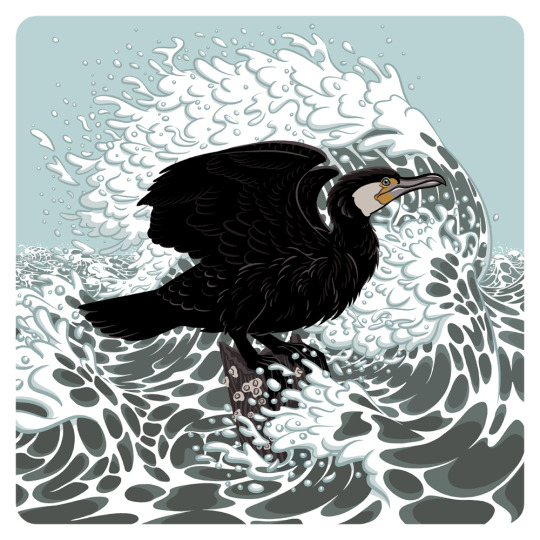
Inspired by the recent storms, here's a great cormorant facing the wind.
#great cormorant#shag#cormorant#phalacrocorax carbo#black shag#black cormorant#great black cormorant#large cormorant#kawau#phalacrocoracidae#sticker#wave#ocean#wind#storm#sea bird#pelagic#jada fitch#illustration#art#design#animal art#animals#nature#maine#crashing#windy#maine artist#maine storms#maine illustrator
241 notes
·
View notes
Text


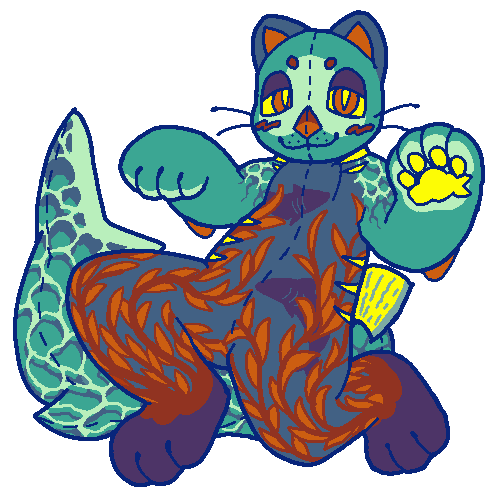
more toyhouse icons ^_^
#i was listening to the aquabats while drawing laika & i realized its very fitting for her. maybe i should make oc playlists….#my art#laika#roe#pelagic
142 notes
·
View notes
Text
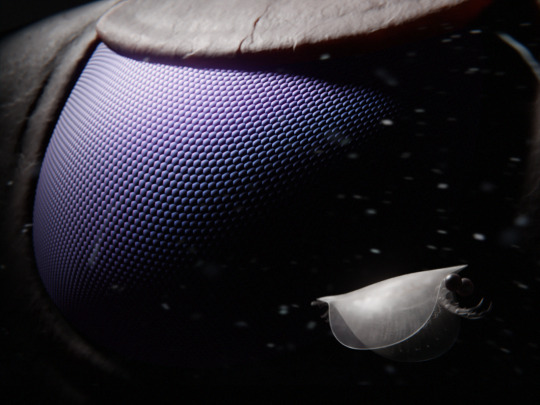
514 millions years ago in what will one day be known as the Emu Bay Shale (South Australia), a tiny Isoxys glaessneri encounters the hunter 'Anomalocaris' briggsi.
'Anomalocaris' briggsi was a large suspension-feeding radiodont related to the famous raptorial predator Anomalocaris canadensis. It is one of two radiodont species for which exceptionally detailed fossils of compound eyes are known. The eyes in this species are unsual for radiodonts in that they are not stalked, and protected by a small plate which was likely a modified version of the lateral carapace elements found in hurdiids. The eye morphology suggests that 'A.' briggsi was a mesopelagic species capable of inhabiting depths of several hundred meters, using its acute vision to detect planktonic prey (Paterson et al. 2020).
Isoxys was a cosmopolitan genus of stem-euarthropod in the Lower and Middle Cambrian, characterized by a bivalved shield covering its whole body, two large eyes, and a frontal pair of so-called 'great appendages' probably used for grasping food items. These appendages show similarity with both the frontal appendages of megacheirans and those of radiodonts like Anomalocaris, and its mix of derived and basal anatomical traits (such as biramous appendages but an unclerotized trunk) make it a crucial organism for understanding the early evolution of arthropods (Legg & Vannier 2013, Zhang et al. 2021).
I tried to recreate the feeling of this common yet lovely type of scene in sci-fi movies where a ship or station gets dwarfed by a gigantic object slowly emerging behind it from the shadows - the only difference is that the 'giant' eye here is only about 3 cm wide, though that was still huge for the time.
References and technical details about the reconstruction under the cut:
The soft parts of I. glaessneri are not known (except for the eyes). Trunk appendages are based on I. curvirostratus (Zhang et al. 2021). Great appendages are partially based on I. communis, which may be the adult form of I. glaessneri (Fu et al. 2012); unfortunately, the great appendages of I. communis are poorly preserved (García-Bellido et al. 2009), so frontal appendage morphology was complemented with the better-known I. acutangulus.
The Isoxys is depicted here with only 11 pairs of trunk limbs, instead of the usual 13+ (Zhang et al. 2021). Based on the assumption that the ancestral arthropod grew by post-hatching addition of segments (anamorphosis) (Liu et al. 2016), a reduced number of trunk limbs was judged appropriate given the small size of the specimen (ca. 6.5 mm) and the possible juvenile nature of I. 'glaessneri'.
References:
Fu, D., Zhang, X., Budd, G. E., Liu, W., & Pan, X. (2014). Ontogeny and dimorphism of Isoxys auritus (Arthropoda) from the Early Cambrian Chengjiang biota, South China. Gondwana Research, 25(3), 975–982. https://doi.org/10.1016/j.gr.2013.06.007
García-Bellido, D. C., Paterson, J. R., Edgecombe, G. D., Jago, J. B., Gehling, J. G., & Lee, M. S. Y. (2009). The bivalved arthropods Isoxys and Tuzoia with soft-part preservation from the Lower Cambrian Emu Bay Shale Lagerstätte (Kangaroo Island, Australia). Palaeontology, 52(6), 1221–1241. https://doi.org/10.1111/j.1475-4983.2009.00914.x
Legg, D. A., & Vannier, J. (2013). The affinities of the cosmopolitan arthropod Isoxys and its implications for the origin of arthropods. Lethaia, 46(4), 540–550. https://doi.org/10.1111/let.12032
Liu, Y., Melzer, R., Haug, J., Haug, C., Briggs, D., Hörnig, M., He, Y., & Hou, X. (2016). Three-dimensionally preserved minute larva of a great-appendage arthropod from the early Cambrian Chengjiang biota. Proceedings of the National Academy of Sciences, 113, 5542–5546. https://doi.org/10.1073/pnas.1522899113
Paterson, J. R., Edgecombe, G. D., & García-Bellido, D. C. (2020). Disparate compound eyes of Cambrian radiodonts reveal their developmental growth mode and diverse visual ecology. Science Advances, 6(49), eabc6721. https://doi.org/10.1126/sciadv.abc6721
Schoenemann, B., & Clarkson, E. N. k. (2011). Eyes and vision in the Chengjiang arthropod Isoxys indicating adaptation to habitat. Lethaia, 44(2), 223–230. https://doi.org/10.1111/j.1502-3931.2010.00239.x
Zhang, C., Liu, Y., Ortega-Hernández, J., Wolfe, J. M., Jin, C., Mai, H., Hou, X. G., Guo, J., & Zhai, D. (2021). Differentiated appendages in Isoxys illuminate origin of arthropodization. Research Square.
#anomalocaris#radiodont#isoxys#arthropod#eyes#compound eye#pelagic#emu bay shale#cambrian#paleozoic#paleoart#my art
485 notes
·
View notes
Text

Shrimply pelagic
69 notes
·
View notes
Text

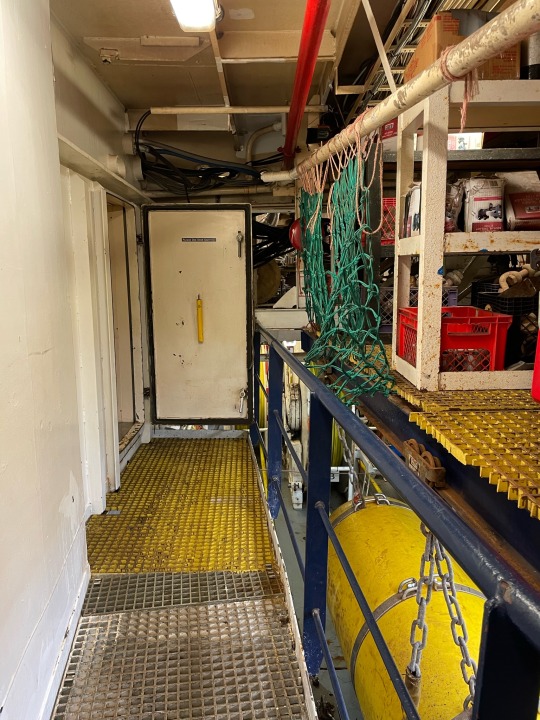



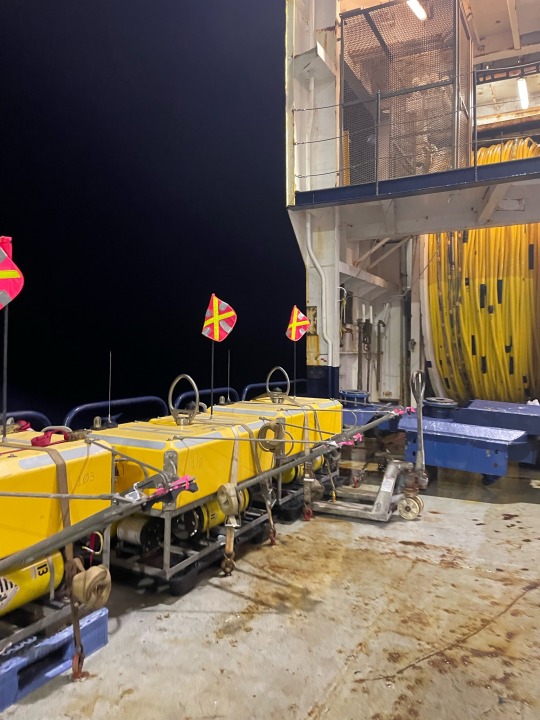
photos i took on deck on the seismic vessel, r/v marcus g langseth
26 notes
·
View notes
Text

Some pelagic trapjaws reproducing next to a dog
The way they do this Is rather complicated
So, trapjaws descend from trichochelids who could move their shell, and those dudes would reproduce like any other trichochelid, by detaching an arm and having swim off in search of another arm, while it slowly dissolves into gametes. If it does find another arm, which they usually do as they all release their arms at the same time, the two arms will tangle and dissolve each other and then become free swimming larvae.
The benthic trapjaws will also release their tentacles, but because these pelagic trapjaws are, well, pelagic, releasing one of their arms into the open ocean would be a waste energy, so, if they meet a trapjaw of the opposite sex, they will link up their 4 jaws and their 4 tongue like arms will emerge and they will wriggle and tangle around each other till they are fully dissolved and each trapjaw has taken a bit of the slurry of sperm and eggs into their body; where they will later on puke out small babies.
#erythra#speculative biology#speculative evolution#erythra art#spec evo#original species#erythra trapjaws#trapjaws#fish#pelagic#pelagic trapjaw#animal reproduction#alien animals#alien species#reproduction#alien sex
12 notes
·
View notes
Text

#color splash#sexy af#bikini body#sexy#nice view#swimsuit#swimwear#bikini#pelagic#bikini fishing#boat girl
130 notes
·
View notes
Text
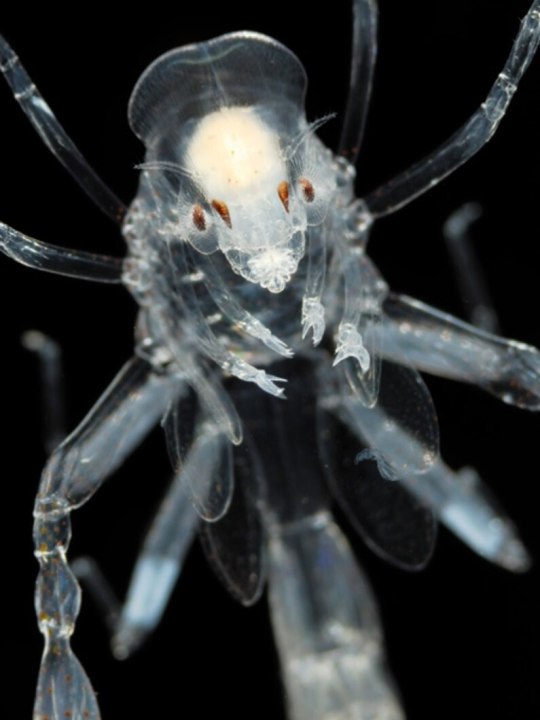
phronima ("Pram bug")
Photo by Solvin Zankl
3 notes
·
View notes
Text
a study on sexual segregation of pelagic sharks and the potential threat from fisheries by NLM, focusing on mako sharks, our current topic and shark on this blog. For people who find the writing too complicated, we will post a seperate text that is a rephrasing of the text but simplified by AI.
3 notes
·
View notes
Text
Otago Wildlife Masterclass November 2022
A few photos from our recent Masterclass in Ōtepoti!
We had another stunning weekend in Ōtepoti for the Wildlife Photography Masterclass a few weeks ago!
I’ve not run a workshop in spring before, so it was interesting to see what the wildlife was up to compared to our trip back in May. Big highlights were seeing mama pakake (New Zealand sea lion) Mia and her yearling pup Sienna dozing on Alan’s beach, the tara (White-fronted tern) colony on…
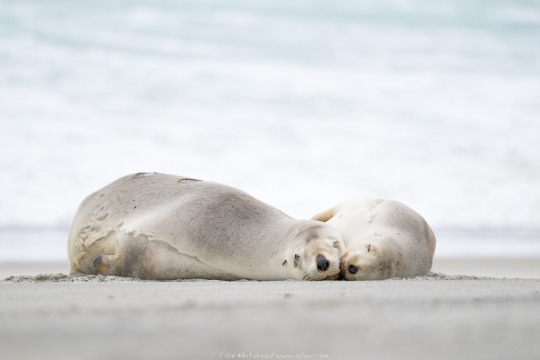
View On WordPress
#albatross#bird photography#new zealand#new zealand birds#new zealand photography workshops#new zealand sealions#otago#ōtepoti#pelagic#seabirds#wildlife masterclass#wildlife photography
8 notes
·
View notes
Photo
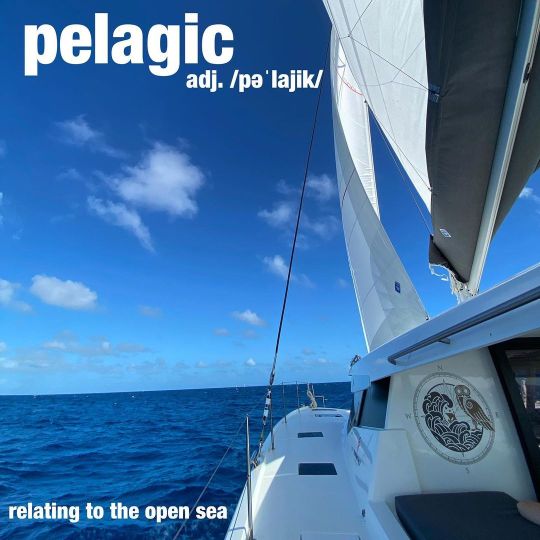
They hoped to see a lot of pelagic wildlife on their sail. ⛵️ 🐠 🐟 🐬 . . . . #pelagic #openocean #ocean #wordoftheday #dictionary https://www.instagram.com/p/Cpd6IZZOjVo/?igshid=NGJjMDIxMWI=
2 notes
·
View notes
Text
#pokemon#the boys#misty#the deep#vaporeon#water#fish#pelagic#ocean#bugs#edit#meme#lol#laught out loud#ecks dee#lamo#marvel
1 note
·
View note
Text
Endoparasites in Sardinella lemuru and Glossogobius guiris from Caraga, Philippines
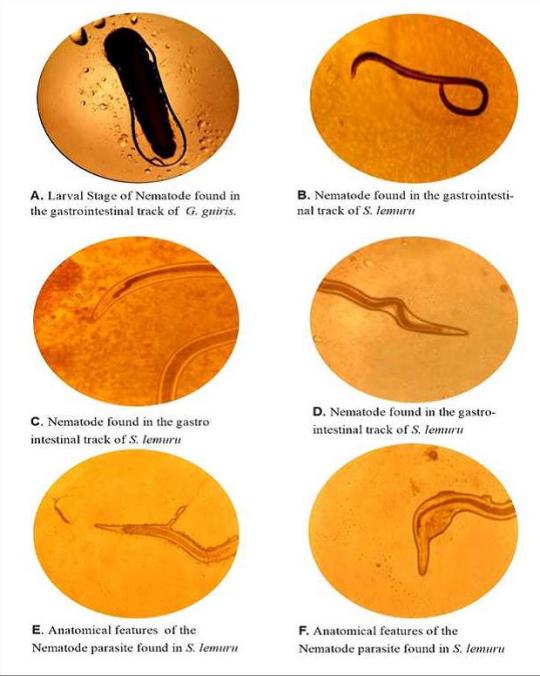
Abstract
Fish often serves as a staple food and protein source. Most Filipinos depend on fishing activities as a means of living. Fish parasites are diverse and pervasive organisms affecting a variety of hosts, including commercially important fish. Despite being utilized for commercial purposes, limited studies on fish parasitism are done in the Caraga region and are published in the Philippines. This study is one of the few conducted on the prevalence of parasites from the coast of Cabadbaran City and Lake Mainit in Jabonga, Agusan Del Norte, Phils. The two areas were the major fishing ground for different fish varieties sold in the local market. Two fish samples were collected: Glossogobius guiris (n=100) and Sardinella lemuru (n=100). Standardized protocols for fish parasite investigation were adopted. From the collected fish samples, the gastrointestinal tract was subjected, then examined and isolated. Of the 200 individuals, there were 2 found infected withG. guiris and 8 infected withS. lemuru. The recorded parasite was identified as Nematodes and was mostly observed in marine fish species (S. lemuru) when compared to freshwater fish (G. guiris). This implies that the occurrence of these parasites may vary depending on the fish type, maturity, diet composition, and location. A significant difference p=0.0003 was observed in the length-weight and prevalence of fish parasites and infers that size structure is associated with parasitic rate. Thus, the importance of conducting fish parasites could give an understanding of how this ubiquitous organism affects commercially important fish and awareness to the fish-eating community.

Introduction
In the Philippines, fish livelihood activities greatly contribute to the local and national economies. Fishing has produced a large contribution to the country’s development, with the recorded input of an estimated 4.33 billion dollars to the country’s financial resources (BFAR, 2016). Due to this record, there is a need for intensive management of fishery activities to maintain the economic stability of the country. Along with this is the careful assessment of the quality of harvest as its Philippine catch value increases over time (Anticamara and Go, 2016). Fish is successfully marketed according to a range of customer key standards (Saeed et al., 2022), and such requirements are qualities that are largely influenced by environmental factors (Fritrianiet al., 2019).
A prevalent problem in aquatic animals is parasitism which contributes to high mortalities among fish stocks (Edeh & Solomon, 2017). This special interaction between organisms involves a parasite harming a host or limiting its abundance. The impact of these organisms stretches out to an ability to wipe out other species due to their ability to cause wide epidemics, especially for disease-causing parasites (Frainer et al., 2018). Parasites are classified into ectoparasites, parasites on the external part of the host and endoparasites, parasites within the host’s body. Such endoparasites may be located within the flesh and organs of the host organism (Edeh & Solomon, 2017). Flagellates, amoebae, and Haplosporidia are examples of these parasites, to name a few (Lucas etal., 2019). The existence of these harmful organisms affects fish quality such that a study made byRamos, 2020 proved that some of these parasite-infested fish products are commercialized.
Despite their ability to cause diseases, fish are also known to be effective bioindicators. In an evaluation performed by Fierro etal., 2019, fishes were proven to present information on human agricultural activities to which their setting is subjected, as well as the water pollution in the same setting. In addition, fish examination gives information on the health and environmental disturbances by assessment of the inner organs and tolerance. Fish had also been used in a different study by (Gutiérrez and Agudelo, 2020) in assessing the accumulation of coal and mercury in Colombian waters, which gave significant results. Many factors contribute to the results of these bioassessments, namely, the increase in population (Rabadon & Corpuz, 2021), as well as climate change and the pollution that is brought about by the same factor (Wu etal., 2019).
Moreover, the fish-size relationship and the occurrence of parasites in fish products reduce the value and quality to drop, thus changing the marketability of the fish (Abollo etal., 2001; Levsen et al., 2005; Karl, 2008; Llarena-Reino etal., 2013; D’Amico et al. 2014; Llarena-Reino et al., 2015).
Fish parasite infection and pollution develop in ineffective energy and nutrient consumption and an escalation in energy expenditure of fish through respiration, impacting reproduction and growth (Marcogliese and Pietrock, 2011; Khan, 2012; Shea- Donohue et al., 2017; FAO 2020). More importantly, the risk posed by fish-borne parasitic zoonoses to human health (Quiazon, 2015) is estimated to be high, especially since fish is the staple food of fishing communities and eating raw fish is common practice in the region (Soares Magalhães etal., 2014; Tenorio and Molina, 2021).
This study utilized Sardinella lemuru (Tamban) and Glossogobiusguiris (Pidjanga), which is a commercially important fish in the Caraga region and the Philippines as well. Being ranked second in terms of volume in fish production, it is considered to be one of the most abundant fish and an affordable source of protein in the country (Labrador et al., 2021). These fish have a good hold on the economy of the Philippines and can affect the state of that part of the country. However, according to a study (Pohle, 2013), consumers have the trend in food without assessing the quality and information of the said product. In this case, consumers are at risk of diseasecausing factors brought upon by the products they buy due to their lack of awareness and lack of assessment from the food industry (Ziarati etal., 2022). In support of this information, the American Society has found that about 260,000 people have reported being sick from consuming fish products. Likewise, Barrett etal., 2017 also recorded 857 outbreaks causing about 4800 illnesses with hospitalizations and deaths in the same country due to polluted fish.
Further, due to their availability and precise identification of species, fish assessments prove to be convenient and useful in scientific investigations. It is also imperative to perform with scientifically proven and applicable methods along with the locallyobtained samples. More importantly, there is a need to use a preventive approach in the maintenance of fish health in our aquatic resources (Assefa & Abunna, 2018). Moreover, Cook, 2017, infers that the foundation of sustainability rests upon three factors which are social, economic, and environmental. There were no studies conducted in the region utilizing the fish samples. Thus, the study aims to provide baseline information to address the gap. Lastly, the focus of the study is to determine the prevalence of endoparasites in Sardinella lemuru and Glossogobius guiris. While this also touches on the protection and conservation of our water resources as well as the health of the fish-consuming community.
Source : Endoparasites in Sardinella lemuru and Glossogobius guiris from Caraga, Philippines | InformativeBD
0 notes
Text

Young fisherman in Old Puteoli, Naples, Campania, Italy
#scuola#scuole#fishermen#fisherman#fishing#pesca#ittica#pelagic#oldphoto#oldpicture#campania#italy#italia#mare#sea#boat#pescatore#pescatori
0 notes


